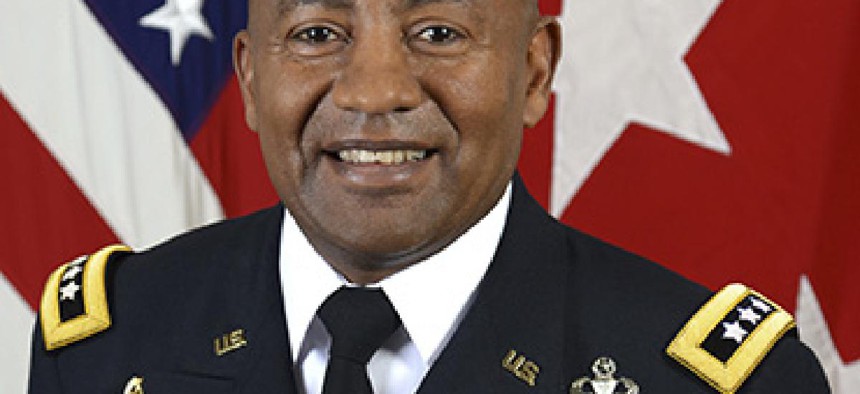Army CIO unveils new IT strategy

Lt. Gen. Robert Ferrell said the Army’s IT strategy for the short and medium terms includes a focus on cybersecurity and cloud computing.

Army CIO Lt. Gen. Robert Ferrell said he has been developing the Army Network Campaign Plan for about a year.
Army CIO Lt. Gen. Robert Ferrell has released a set of ambitious IT modernization plans that seek to accelerate progress in key areas such as cybersecurity and cloud computing for the service's more than 1.4 million network users.
The strategy includes bolstering the throughput of Army networks and delivering voice-over-IP technology, and it establishes a clear IT road map for the Army through the end of the decade. In unveiling the strategy at an AFCEA NOVA conference for defense IT executives on Feb. 4, Ferrell sought industry help on specific technological challenges, such as distributed cloud nodes and mobile solutions, and offered a timeline for vendors to follow.
The strategy, which stretches through fiscal 2021 and is dubbed the Army Network Campaign Plan, has five broad goals:
- Align signals capabilities to support all Army missions.
- Boost cybersecurity capabilities, in part by establishing a series of cyber protection teams.
- Strengthen the Army's underlying IT infrastructure by increasing throughput, among other measures.
- Make better use of IT at the edge of Army networks by taking advantage of tools such as data consolidation and voice over IP.
- Strengthen network operations by, for example, "flattening" the IT architecture to give network operators greater visibility.
Execution of those goals is divided into the near term (fiscal 2015 and 2016) and medium term (fiscal 2017 to 2021). In the near-term plan, the Army will upgrade its Multiprotocol Label Switching, eliminate duplicate legacy systems to reduce the "attack surface" of Army networks and consolidate data centers to help move toward the cloud.
The medium-term plan takes that work several steps further by strengthening the Army's computing infrastructure and extending business systems across the enterprise.
Ferrell said he expects the Army to publish a new cloud computing strategy in March that will incorporate the results of tests the Defense Information Systems Agency is conducting with Amazon Web Services and IBM cloud offerings. Meanwhile, the Army's Program Executive Office for Enterprise Information Systems is devising a blanket purchase agreement framework for the Army to buy commercial cloud services, Ferrell said.
The Army's consolidation of data centers is part of a larger cost-cutting mandate across the Defense Department. Ferrell said the Army was about 55 percent through with its data center consolidation and is at a crucial juncture as it finishes a pilot project at one of its largest facilities, the Redstone Core Data Center in Alabama. Redstone houses more than 11,000 applications, and Ferrell said deciding which ones to leave in place, move or disable will shape the Army's work in the field.
In terms of cybersecurity, the Army is working toward a force of 1,100 that will be a combination of civilian and military personnel. Ferrell said the Army wants to establish 41 cyber protection teams -- 21 on active duty, 11 in the National Guard and nine in the reserves. He expects the active-duty teams to have full operational capability in April or May.
In September 2014, Army Secretary John McHugh established a cyber-specific career branch in the Army that is drawing on recruiting lessons from the Department of Homeland Security, the FBI and the private sector.
"By establishing a career field for cyber, it just really strengthens the Army's capability to…educate and train those men and women for specific things within the cyberspace operations," Ferrell said after his Feb. 4 presentation.
Yearlong planning
Although the Army has been working on network modernization for some time, Ferrell said that given the constrained fiscal environment, it was time to strategically align those efforts with the service's global operations.
According to the new strategy: "Over the last decade, the Army has invested heavily in augmenting and integrating the network's operational component capabilities while investments in the enterprise and installation components have remained relatively stagnant, fostering significant disparities."
Ferrell told reporters that he has been developing the strategy for about a year and has been doing so in coordination with the CIOs at DOD, DISA and other military services "because it's a partnership. It's one global network, and so what I do really [impacts] them."
NEXT STORY: Flagging skill sets yet to be addressed





